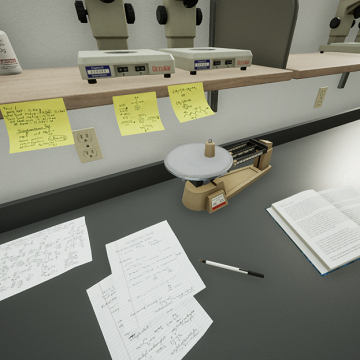Virtual Physics Labs
Complicated physics subjects are not a problem with virtual labs
Physics is a complex and challenging subject that requires students to have a deep understanding of abstract concepts and mathematical equations. Traditionally, physics has been taught using textbooks, lectures, and physical labs. However, the introduction of virtual labs has revolutionized the way students learn physics. In this article, we will explore the benefits of virtual labs for teaching physics.
1. Accesibility:One of the primary benefits of virtual labs is accessibility. Physical labs require students to be present in a specific location at a specific time, which can be challenging for students with busy schedules or those who live in remote areas. Virtual labs, on the other hand, can be accessed from anywhere at any time. This allows students to learn at their own pace and on their own schedule, making physics more accessible and inclusive.
2. Cost-Effectve:Physical labs can be expensive to set up and maintain, requiring equipment, supplies, and specialized instructors. Virtual labs, on the other hand, are more cost-effective, eliminating the need for physical equipment and specialized instructors. This technology allows for large-scale adoption of virtual labs, making physics education more accessible to a wider range of students.
3. Safety:Physics experiments can be dangerous, requiring strict adherence to safety protocols to minimize the risks involved. Physical labs can put students at risk of injury or damage to equipment if safety protocols are not followed. Virtual labs, on the other hand, provide a safe environment for students to learn and practice physics experiments without the risk of injury or damage to equipment.
4. Flexibility:Virtual labs offer flexibility in teaching physics concepts. Teachers can create virtual experiments that allow students to explore different concepts and scenarios. These virtual experiments can be modified to fit the needs of different student groups, making it easier for teachers to tailor their lessons to the specific needs of their students.
5. Realistic Simulation:Virtual labs can provide realistic simulations of physics experiments, allowing students to experience the principles of physics in a more tangible and engaging way. These simulations can be designed to mimic real-life physics scenarios, providing students with a more immersive learning experience.
6. Improved Understanding:Virtual labs can improve students' understanding of physics concepts. Students can interact with virtual experiments and receive instant feedback on their performance. This immediate feedback allows students to identify areas for improvement and adjust their approach to the experiment, improving their understanding of the underlying physics principles.
7. Increased Engagement: Virtual labs can increase students' engagement in learning physics. Physics can be a challenging subject, requiring students to grapple with complex concepts and mathematical equations. Virtual labs provide a more engaging and interactive approach to learning, making physics more accessible and enjoyable for students.
8. Scalability:Virtual labs can be easily scaled to accommodate large numbers of students. Physical labs can be limited by the number of available lab stations and the availability of specialized instructors. Virtual labs, on the other hand, can be accessed by an unlimited number of students simultaneously, making it easier to teach large groups of students.
9. Tim Efficiency:Virtual labs are time-efficient for both students and teachers. Physical labs can require extensive set-up time and cleanup time, which can limit the amount of time students have to practice experiments. Virtual labs eliminate the need for set-up and cleanup time, allowing students to spend more time practicing experiments and teachers to spend more time teaching.
10. Increased Retention:Virtual labs can increase students' retention of physics concepts. Students can practice experiments as many times as they need to master the underlying physics principles. This repetition and immediate feedback can help students retain the information better than traditional teaching methods.
In conclusion, virtual labs offer a new and exciting way to teach physics concepts. They provide an immersive and interactive learning experience that engages students and fosters a deeper understanding of the subject matter. The benefits of virtual labs are clear: increased safety, reduced cost, enhanced engagement and retention, and improved flexibility and scalability. As the technology continues to evolve, virtual labs will become an increasingly important tool in physics education. By incorporating virtual labs into their curriculum, educators can help students develop the skills and knowledge they need to succeed in the field of physics and beyond.
By Sofia Indira Calderón Alvarez
Contact Us













